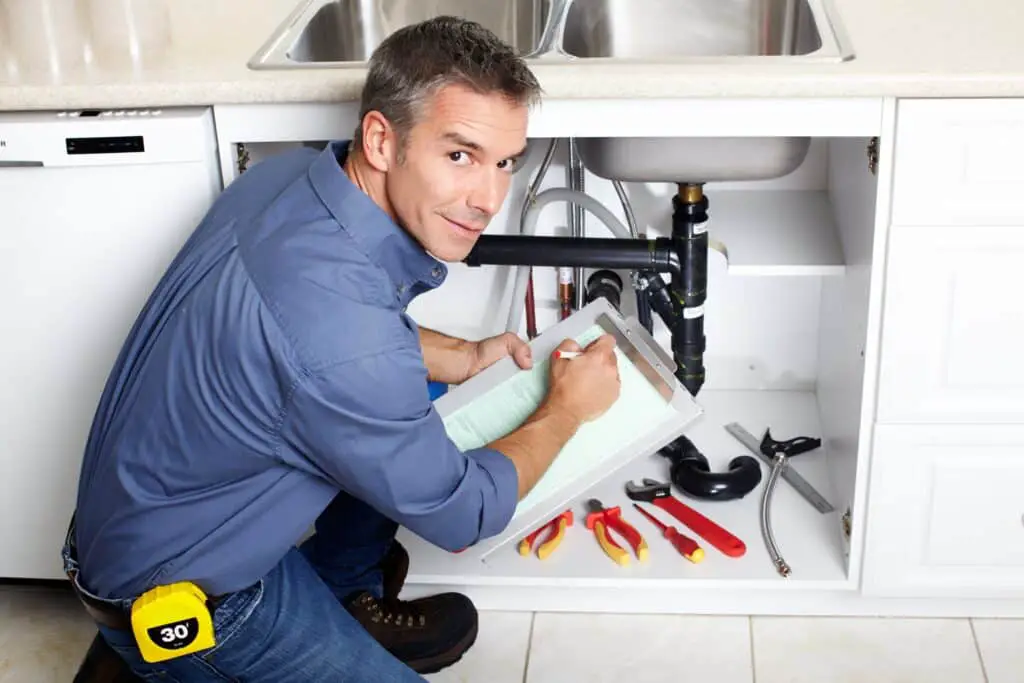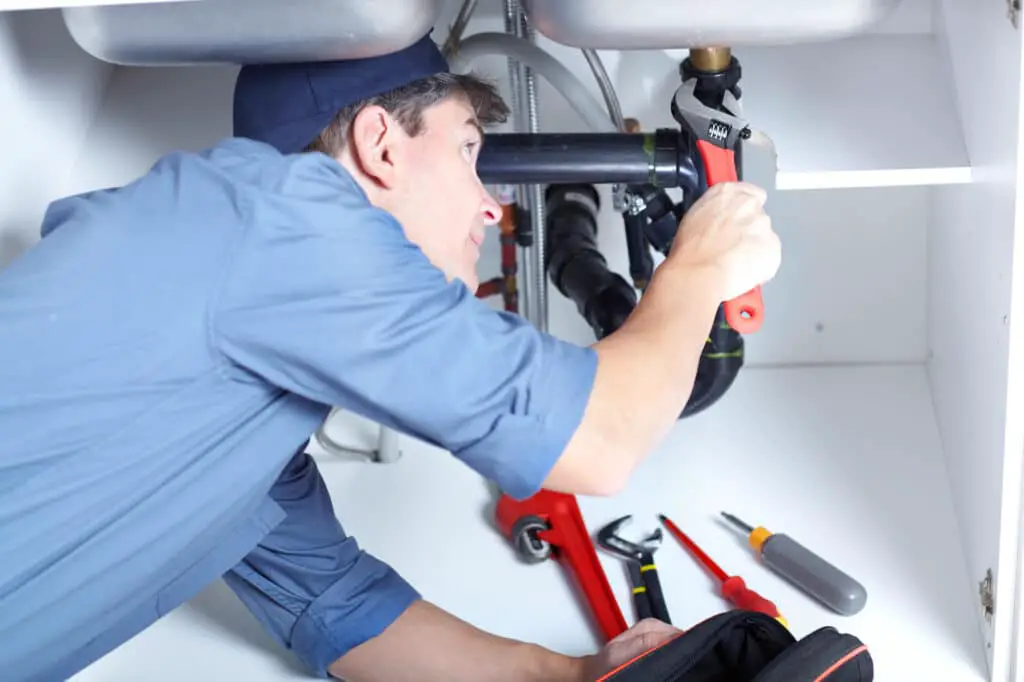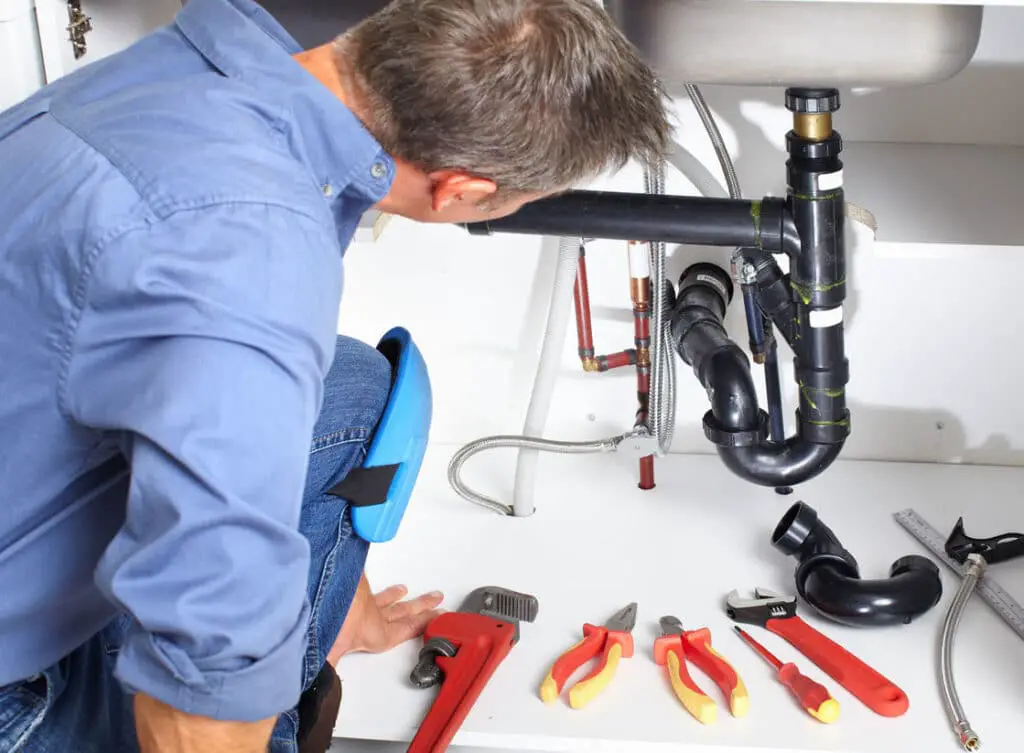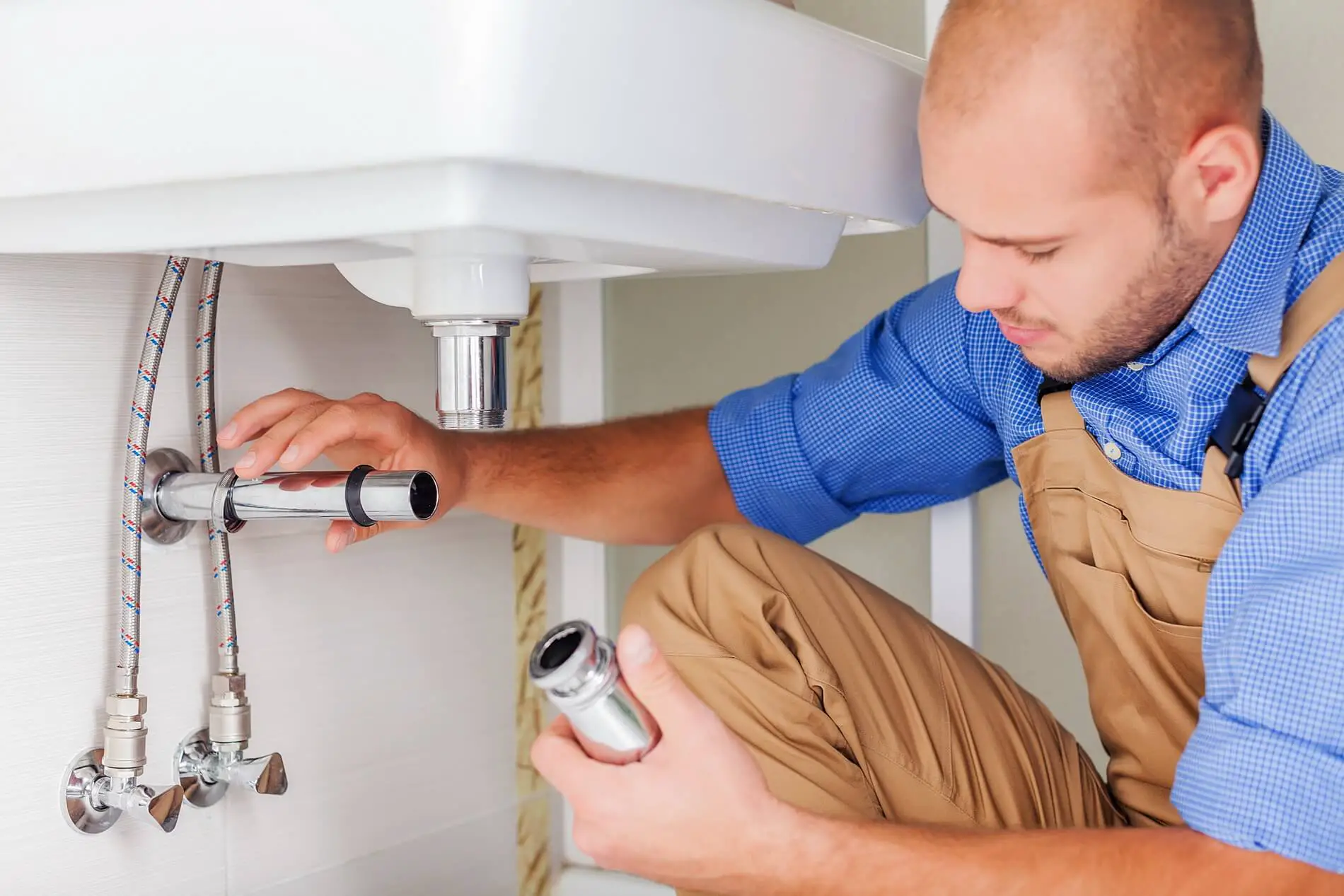Is Plumbing Considered Construction
Introduction:
Is Plumbing Considered Construction: This essay examines whether plumbing is construction and its ties to the building sector.
Plumbing is essential to building functioning, efficiency, and safety. Plumbing is added during construction alongside electrical, carpentry, and HVAC work.
The significance of plumbing in construction is undeniable. Plumbing infrastructure is responsible for providing clean water for consumption, distributing water for various uses within buildings, and efficiently disposing of waste and sewage. Properly designed and installed plumbing systems are crucial for maintaining public health, ensuring occupant comfort, and complying with building codes and regulations. Plumbing is an integral part of the construction process, as it ensures that buildings are equipped with the necessary water supply and drainage systems for functional and habitable spaces.

What is plumbing considered as?
It is different from city or building water and sewage systems.
Plumbing is a skilled job. It entails installing, repairing, and maintaining residential, commercial, and industrial water, drainage, and sewage systems. Plumbers are trained to deal with pipes, fittings, valves, and other components to assure plumbing system safety and function.
Plumbing is essential construction infrastructure. It’s crucial to building projects’ functionality, efficiency, and safety. Plumbers collaborate with architects, contractors, and engineers to design and install building-code-compliant plumbing systems.
Plumbing is also vital to public health and sanitation.
What does plumbing mean in construction?
The term ‘plumbing’ refers to any system that allows the movement of fluids, typically involving pipes, valves, plumbing fixtures, tanks and other apparatus. Modern plumbing may also involve the movement of gases such as fuel gas.
Plumbing in construction encompasses various aspects, including:
Water Supply
Plumbing systems in construction involve the installation of pipes, valves, and connections that bring potable water into the building. This includes connecting the building to the main water supply, ensuring the proper distribution of water to various fixtures such as sinks, showers, toilets, and appliances like washing machines and dishwashers.
Drainage and Waste Management
Plumbing also involves the design and installation of drainage systems to remove wastewater and sewage from the building. This includes the installation of pipes, drains, and vents that facilitate the efficient disposal of wastewater, preventing backups and ensuring proper sanitation.
Plumbing Fixtures
Plumbing systems in construction include the installation of fixtures such as sinks, toilets, showers, bathtubs, and faucets. Plumbers ensure these fixtures are properly connected to the water supply and drainage systems, ensuring their functionality and compatibility with the overall plumbing infrastructure.
What is difference between plumbing and pipes?
Plumbing systems bring water into a facility and provide safe drainage for water and wastewater as it exits a facility. Process piping moves chemicals, gases, water, and other fluids in support of an internal manufacturing or processing operation.
Plumbing and pipes are closely related but have distinct differences in their meanings and usage.
Plumbing refers to the overall system of installing, repairing, and maintaining water supply, drainage, and sewage systems in buildings. It encompasses the entire network of pipes, fixtures, fittings, valves, and other components that make up a functional plumbing system. Plumbing involves the design, installation, and coordination of these systems to ensure proper water distribution, waste disposal, and the functionality of plumbing fixtures such as faucets, toilets, showers, and sinks. Plumbers are professionals who specialize in plumbing and perform tasks related to the plumbing system.
On the other hand, pipes are a specific component of the plumbing system. Pipes are cylindrical tubes made of copper, PVC, PEX, or galvanized steel. These pipes transport water, gas, and other fluids in the plumbing system. Pipes carry water from the main supply line to building fixtures and appliances and drain waste and sewage.They come in different sizes, lengths, and materials depending on the specific requirements of the plumbing system.
What is the difference between plumber and plumbing?
Plumbers are trained to install and repair the piping systems that carry water, waste, and gases in residential and commercial buildings. Plumbing contractors are businesses that employ plumbers to work on their behalf.
The difference between a plumber and plumbing lies in their respective definitions and scopes:
Plumber
Plumbers deal with pipes, fixtures, valves, and other parts to maintain water supply, drainage, and sewage systems in homes, businesses, and industries. They receive training and may be licensed or certified to diagnose, install, repair, and advise on plumbing systems.
Plumbing
However, plumbing refers to a plumbing system’s pipes, fixtures, and other components. It includes all infrastructure and networks that provide potable water, dispose of wastewater, and maintain building sanitation. The design, installation, repair, and maintenance of plumbing systems ensures safe and efficient water flow and sewage management. Pipes, valves, faucets, toilets, sinks, drains, water heaters, and other plumbing fixtures make up plumbing systems.
Plumbers are experienced professionals who work with and specialize in plumbing systems, whereas plumbing is the system itself. Plumbers are professionals at installing, operating, and maintaining plumbing systems.

How many levels are there in plumbing?
As you move through your career in plumbing, you’ll start with an apprenticeship. From there, you’ll become a journeyman, and then finally earn the classification as a master plumber. Here’s what you need to know about the three levels.
In the context of plumbing, “levels” can refer to different aspects. Let’s consider a few possible interpretations:
Levels of expertise
Plumbing can involve different levels of expertise or qualifications. These levels may include entry-level positions, journeyman plumbers, and master plumbers. Entry-level positions typically require basic skills and knowledge, while journeyman plumbers have completed the necessary training and apprenticeship programs. Master plumbers have advanced knowledge, extensive experience, and may hold additional certifications or licenses. The specific levels and requirements may vary depending on the jurisdiction or professional organizations.
Levels of plumbing systems
Plumbing systems in buildings can have multiple levels, especially in multi-story structures. Each level typically refers to a floor or story of the building. Plumbing systems are installed and interconnected vertically, allowing for the distribution of water and drainage throughout the different levels. The complexity of plumbing systems can vary depending on the size and purpose of the building.
Levels of plumbing codes and regulations
Plumbing codes and regulations exist at different levels, including local, state, and national levels. These codes define the standards and requirements for plumbing installations, ensuring safety, functionality, and compliance with building regulations. Plumbers need to be familiar with and adhere to these codes to ensure their work meets the necessary standards.
What is the role of plumbing in construction?
Plumbing is essential to construction because it installs and connects pipes, fixtures, and fittings for water distribution, waste disposal, and fixture operation. Plumbers collaborate with other construction specialists to install pipes and fixtures appropriately, connect them to water sources, and comply with plumbing laws. Plumbing is critical to building functioning, efficiency, and safety, making it an essential part of construction projects.
Plumbing installs, maintains, and manages water supply, drainage, and sewage systems in structures, making it essential. It ensures safe wastewater disposal and potable water distribution. In residential and commercial construction projects, it improves building usefulness, efficiency, and safety. Here are some construction plumbing basics:
Water Supply
Plumbing ensures that clean and potable water is available in the building. Plumbers install water supply lines, connect them to the main water source, and distribute the water to various fixtures, such as sinks, showers, toilets, and appliances like dishwashers or washing machines. Proper installation and connection of water supply lines are essential to ensure adequate water pressure, reliable flow, and accessibility throughout the building.
Drainage and Waste Management
Plumbing is responsible for the proper disposal of wastewater and sewage from the building. Plumbers install drainage systems that connect to fixtures and carry wastewater away from the building, preventing water damage and maintaining a clean and sanitary environment. They also ensure the installation of appropriate traps and vents to prevent the entry of sewer gases and maintain the proper functioning of the drainage system.
Plumbing Fixtures
Plumbers install various plumbing fixtures, including sinks, faucets, showers, toilets, and water heaters. These fixtures play a vital role in the daily activities of occupants, such as personal hygiene, cooking, and cleaning. Proper installation and connection of fixtures are essential for their reliable and efficient operation.
Does plumbing continue after the construction phase?
Plumbing installation is mostly done during construction, but existing buildings need continuous plumbing services for maintenance, repairs, and improvements. Plumbers fix leaks, clogs, and malfunctions to keep plumbing systems running smoothly. Plumbing maintenance and repair are necessary for a building’s plumbing system to last after construction.
Yes, plumbing work continues after construction. Plumbing installation is crucial to construction, but existing plumbing systems need continual maintenance, repairs, and upgrades.
Plumbers often do routine maintenance after construction. This includes examining pipes, fittings, and connections for leaks and water flow and drainage. Regular maintenance detects and resolves faults before they become major, ensuring plumbing system functionality.
Plumbers are essential for plumbing repairs in existing buildings. Wear and tear and aging components can cause leaks, pipe corrosion, and fixture failure. Plumbers can diagnose and fix these faults to restore plumbing system function.
Is plumbing considered construction?
Plumbing is the installation, repair, and maintenance of water, drainage, and sewage systems in buildings. Plumbing is usually done during building construction alongside carpentry, electrical work, and HVAC installation. Keeps residential, commercial, and industrial water and wastewater systems running smoothly and safely throughout construction.
Plumbing is component of construction. Installs, repairs, and maintains building water, drainage, and sewage systems. Plumbing, along with carpentry, electrical work, and HVAC installation, is essential to building.
Plumbers collaborate with architects, engineers, and other construction experts to design and build plumbing systems. This entails laying out pipes, fixtures, and fittings, connecting them to water sources, and following building codes. Construction projects require plumbing infrastructure for building safety and functionality.
However, plumbing work continues after construction. Plumbers maintain, repair, and enhance existing buildings. To keep home and commercial plumbing systems running well, they fix leaks, clogs, and malfunctions.

Conclusion
Plumbing is undeniably considered a vital component of the construction industry. It encompasses the installation, repair, and maintenance of water supply, drainage, and sewage systems in buildings and structures. Plumbers collaborate with other construction professionals to plan and implement plumbing infrastructure during the construction phase, ensuring the proper functioning and safety of the building.
Plumbing plays a significant role in the functionality, efficiency, and comfort of a structure. It is responsible for delivering clean water for drinking, providing water for various purposes such as bathing and washing, and effectively disposing of waste and sewage. The expertise of plumbers ensures that plumbing systems meet regulatory standards, comply with building codes, and are designed to withstand the demands of the building’s occupants.
Moreover, plumbing work extends beyond the construction phase. Ongoing maintenance, repairs, and upgrades are necessary to ensure the continued efficiency and reliability of plumbing systems in existing structures. Plumbers play a critical role in addressing issues such as leaks, clogs, and malfunctions, contributing to the long-term sustainability and functionality of plumbing infrastructure.








